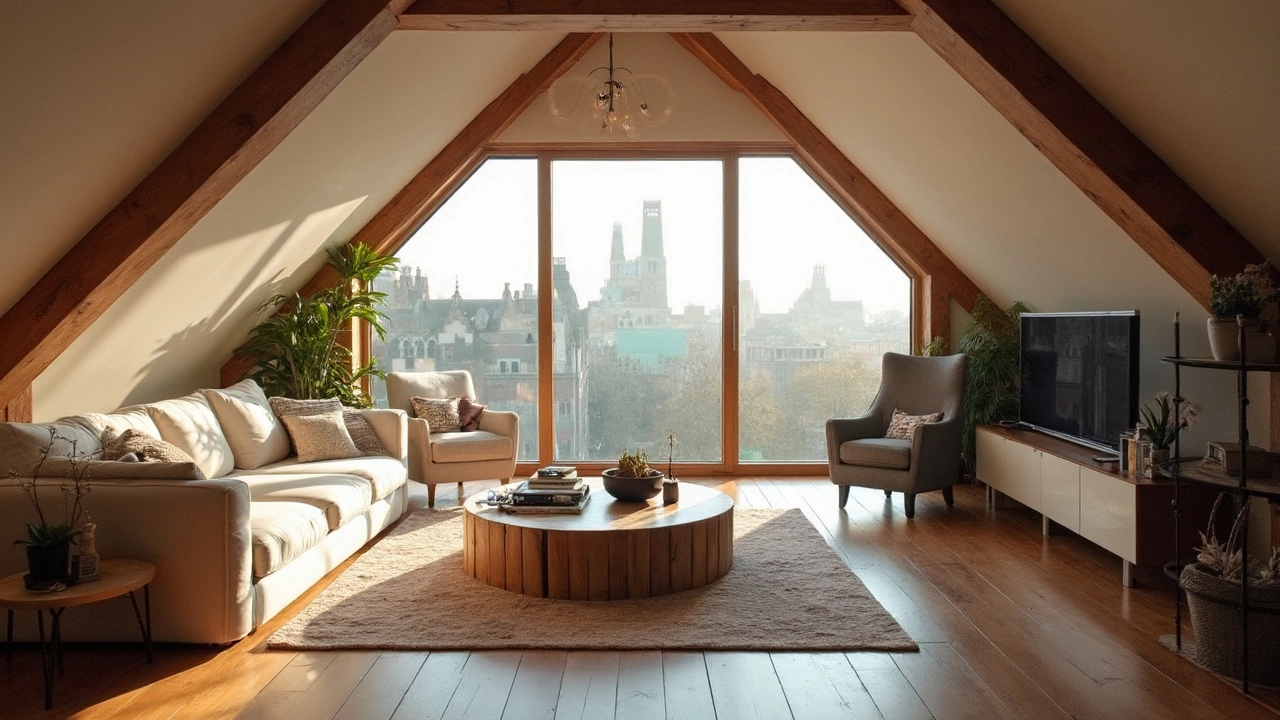Attic Remodel: Transform Your Space with Smart Flooring & Design
If you’ve ever stared up at that under‑used attic and imagined a cozy bedroom, a home office, or a playroom, you’re not alone. The good news is that turning an attic into a functional room isn’t as hard as you think. With a little planning, the right flooring, and a few simple upgrades, you can add valuable square footage without a major addition.
Plan the Layout and Check the Structure
First, measure the usable floor area. Look for low ceiling spots, sloping rafters, and any obstructions like HVAC units. Sketch a rough floor plan that shows where you want walls, doors, and windows. Before you buy anything, confirm the joists can hold the load of new flooring and furniture. If you’re unsure, a quick on‑site inspection from a structural engineer or a trusted contractor can save headaches later.
Next, think about building codes. Most UK homes require a minimum headroom of 2.1 m for a finished attic. If you need to raise the floor or add dormer windows, factor those costs into your budget now rather than later.
Choose the Right Flooring for an Attic
Attics face temperature swings, so pick flooring that handles both heat and cold. Engineered hardwood is a solid choice: it looks like real wood, tolerates humidity changes, and can be installed over most sub‑floors. Luxury vinyl plank (LVP) is another favorite—water‑resistant, easy to clean, and softer underfoot than tile.
When you lay the floor, add a moisture barrier and a layer of underlay to improve insulation and reduce noise. If you love the look of carpet, consider a low‑pile, moisture‑resistant option that won’t trap dampness.
Don’t forget thermal comfort. Adding a thin layer of rigid insulation under the sub‑floor and sealing any air leaks around the roofline will keep the room warmer in winter and cooler in summer.
Lighting is key in a space that’s tucked under the roof. Install recessed LED lights along the joists to spread even illumination. If you have skylights or dormer windows, position work areas nearby to make the most of natural light. Adding dimmable switches lets you set the mood for movie nights or quiet reading.
Storage solutions keep the attic tidy and functional. Built‑in shelves that follow the slope of the roof make the most of every inch. Consider pull‑out closets with sliding doors to avoid fiddling with awkward hinges. A few well‑placed hooks can hold bikes, ladders, or seasonal gear without cluttering the floor.
Finishing touches bring the attic to life. Choose light‑colored paint to open up the space, and add a simple crown molding to hide any gaps where the walls meet the ceiling. A comfy rug on top of the flooring adds warmth and defines a seating area.
Finally, think about who will do the work. While DIY‑savvy homeowners can handle flooring and painting, structural changes, electrical wiring, and insulation upgrades are best left to qualified tradespeople. Hiring a reputable contractor ensures the remodel meets building regulations and protects your investment.
With a clear plan, the right materials, and a bit of professional help, your attic can become a bright, usable room that adds value and comfort to your home. Ready to start? Grab a tape measure, sketch your dream layout, and let First Choice Flooring guide you through the best flooring options for a flawless attic remodel.
Is It Worth Converting Your Loft? Practical Insights
- Gavin Whitaker
- |
- |
- 0
Loft conversions can transform unused attic space into functional living areas, boosting both property value and quality of life. With a variety of styles to choose from, including dormer and hip-to-gable conversions, homeowners can customize the look to fit their needs. Costs and regulations vary, so understanding local building codes and budgeting is crucial. Practical tips for designing and utilizing loft space can help make the most of this investment. Assessing the potential benefits and limitations will guide homeowners in deciding if a loft conversion is right for them.
View more